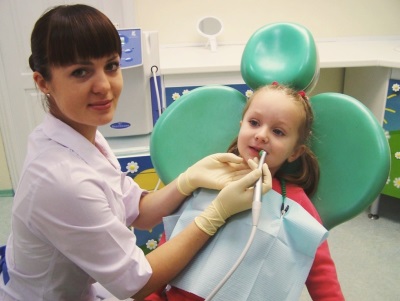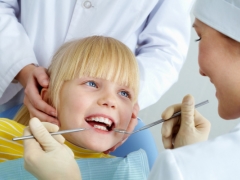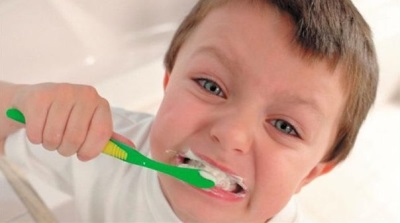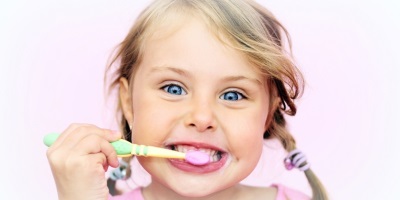How many teeth are 3 years old in a child and how are teeth treated at this age?
The process of teething in babies worries almost all parents. Therefore, they are interested in certain norms related to this process, for example, how many teeth are characteristic of three-year-old children. It is also important for parents of three-year-olds to know which dental problems are most common at this age.
How many teeth should a child have at 3?
With normal development, most three-year-olds have twenty teeth. All of them are milky and remain in the baby’s mouth in such an amount until about the age of 5, when the first permanent teeth, called sixes, begin to be cut. Each jaw of a three-year-old has 10 teeth, among which there are 4 incisors, 4 chewing teeth (molar) and 2 canines.
At the same time, minor deviations are not considered pathology. For example, some children of 3 years of age may have less than 20 teeth if they started cutting later. This happens because of a genetic predisposition, if the parents also have milk teeth for their crumbs, too, after average terms.
Deviations from the norm
In addition to heredity, the number of teeth at 3 years of age can also be influenced by factors that parents should pay attention to. For example, the absence of several teeth in three-year-olds may be due to the lack of substances necessary for their development in the toddler's diet. Therefore, it is especially important to ensure that the child consumes enough foods and drinks with vitamins D, A and E, calcium, and fluoride.
Also, frequent diseases in children and chronic pathologies of the cardiovascular, endocrine, or nervous system affect the normal growth of teeth. And if the crumbs in 3 years in the mouth, there are only a few teeth, this is a reason to consult a doctor and examine the child, so as not to miss the time for timely treatment.
What problems can be?
The most common problem that parents of 3-year-old babies often face is caries. It quickly affects the milk teeth, causing the destruction of enamel, especially if the child does not thoroughly clean the mouth and consumes a lot of sweets. The first signs of caries often go unnoticed, because they are white spots, and the teeth in children with such lesions of the enamel do not hurt.
If you do not take your child to the dentist regularly, they quickly go into deeper stages, affecting enamel first, and then deeper tissues with the development of pulpitis or periodontitis. Such complications are manifested by pain, redness of the gums, fever and other unpleasant symptoms. They require the immediate intervention of the dentist and often lead to the removal of a diseased tooth.
Other dental problems at 3 years of age are:
- Yellow plaque on the teeth. It often appears due to poor oral hygiene or staining with food pigments.
- Black plaque on the teeth. Its appearance can be triggered by various factors, for example, dysbacteriosis in the crumbs, the development of pigment-forming microorganisms in the baby’s oral cavity, or iron supplements.
- Underdevelopment of tooth enamel, which is manifested by darkening of the enamel, white spots and increased fragility of the teeth.
- Excess fluoride in the water consumed by the child, due to which the teeth are covered with white stripes, as well as white or brown spots, and erosion occurs on the surface of the teeth.
- Curved teeth. This problem is more common after the eruption of the molar teeth, but the milk teeth can grow crookedly, for example, if the child sucks a finger or is poorly nourished.
Treatment methods
In the treatment of caries in 3-year-old children use different methods depending on the prevalence and severity of the process. When an illness is detected at an early stage, doctors often resort to fluoridation, remineralization or silvering, and if the infection has penetrated deeper, the tooth should be cleaned of affected tissues and sealed. In situations where tooth decay is complicated, a deeply infected tooth must be removed.
When performing manipulations with teeth at 3 years of age, local anesthesia can be used, for which anesthetic gels or injections are used. General anesthesia is prescribed for the treatment of a large number of teeth at once, the presence of problems with the nervous system or allergies to local anesthetics.
If a child has bite problems, it will be treated by an orthodontist. Depending on the severity of the curvature, the doctor will prescribe trainers or plates, the use of which will help align the milk teeth and ensure the normal development of the jaws. Trainers are usually put on at night, and the plates are most of the day, taking off for a period of meals and brushing.

Tips
- Regularly inspect the teeth of the toddler and as soon as you notice any warning signs (spots, dots, stripes, curvature, darkening, and others), immediately consult a doctor.
- At the age of 3, most babies do not clean their teeth badly on their own; therefore, in matters of hygiene, parental control is important. Teach your child to properly clean and make sure that the crumb carefully cleaned the teeth from plaque in the morning and before bedtime, and spat out the paste.
- Set an example for your child to care for your teeth. Let the baby see that parents regularly brush their teeth regularly and visit the dentist without fear.
Prevention
In order to prevent problems with milk teeth at the age of 3, it is important:
- Pay enough attention to the care of children's teeth, picking up a child suitable for the age of the brush and toothpaste.
- Provide a child with a balanced diet, and if this is not possible, consult a doctor about a suitable vitamin and mineral complex.
- Regularly walk with your baby to the dental examinations every 6 months.
Watch the transfer of Dr. Komarovsky about teeth.













